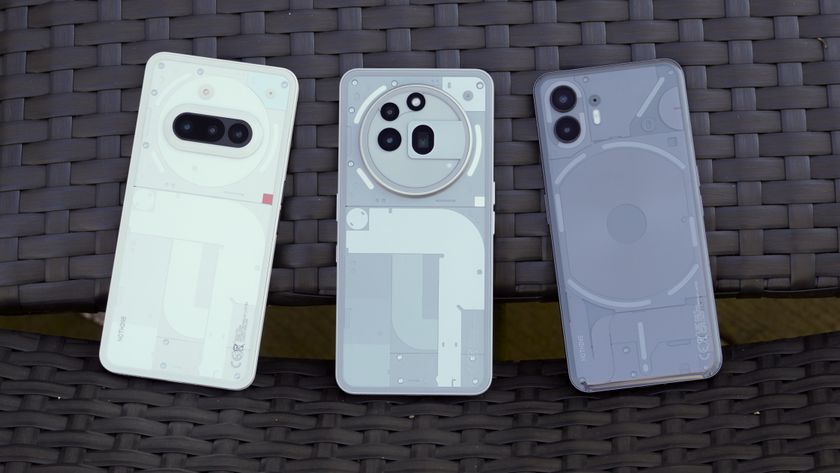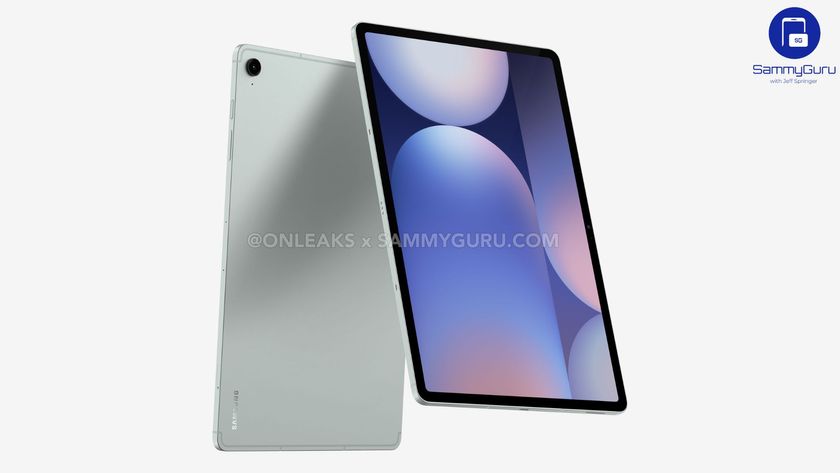What you need to know about the Indian mobile market

India is the second-largest mobile market in the world, overshadowing the U.S. earlier this year and now behind China. The major difference from the U.S. market is the lack of carrier subsidies, and as such all phones in the country are available unlocked and sold at retail pricing.
The meteoric increase in mobile sales over the last three years was fueled by excess disposable income and a rising middle class. Given that the U.S. market — as well as China — is pretty well saturated, manufacturers are increasingly looking to India for future growth. And the fact that there are a billion users that aren't yet connected to the Internet means that there's a lot of room for long-term growth.
Android Central has a budding presence in India. Here's a look at how things work in this part of the world.
The manufacturers

Samsung is the No. 1 mobile manufacturer in India, followed by Micromax and Intex. The same brands — in that order — dominate the smartphone segment as well.
Samsung's wares are very well-received in the country, and the manufacturer has thousands of exclusive storefronts spread across the subcontinent. The South Korean vendor's Galaxy Note series continues to be a strong seller in India when it comes to the high-end segment. Samsung also was quick to see the potential of affordable phablets, with devices like the Galaxy Grand leading the way in this category. For most people, a smartphone is the only gateway to the connected world, which is why phablets are generally preferred in the country.
While Samsung sees a lot of consumer interest from its phablets, it is the local vendors that have managed to make this segment their own.
Micromax's claim to fame was its Canvas series, which offered an affordable alternative to the likes of the high-end Samsungs and LGs of the world. The manufacturer has carved out a niche for itself in the affordable segment, and has since branched out into the sub-$100 category with the Bolt series. It has heavily invested in local manufacturing, producing up to 2 million units a month in the country. Micromax is also the parent company of Yu Televentures, which has inked an exclusive partnership with Cyanogen Inc. to deliver Cyanogen OS pre-installed on its devices. Thus far, we've seen the Yu Yureka, Yu Yuphoria, and the Yunique (they should run out of puns at some stage).
Be an expert in 5 minutes
Get the latest news from Android Central, your trusted companion in the world of Android
Intex is a relatively new entrant in this field, and has gained considerable traction over the course of the last year. The brand sits in third place with a market share of 10.5 percent, offering devices in the Aqua series.
There is a growing Chinese contingent in India, which includes Xiaomi, Lenovo, Huawei and OnePlus. Lenovo — accounting for Motorola's sales — comes in at fourth place. Gionee is taking a different route by shunning away from online sales, instead collaborating with brick-and-mortar stores across the country. Overall, YoY sales of devices by Chinese vendors grew 97 percent this year, whereas local vendors managed 48 percent.
Sony and LG also are notable mentions, with both brands targeting a 10 percent market share. Sony has a well-established presence in India, although the brand does not enjoy a lot of sales from its mobile unit. To rectify this, Sony has announced that it is working on an affordable handset tailored to the Indian market. LG has also stated that it will aggressively target the mid-tier segment in the country with its L series of handsets.
The handsets

Affordable handsets sold under the ₹10,000 segment — that's about $150 USD — account for a majority of smartphone sales. Phones that offer great value for money are also highly sought after, and in this regard Xiaomi has excelled since it made its debut with the Mi 3 last year, which continued with the Redmi 1S and Redmi Note.
Another factor that is a crucial determiner when buying handsets is dual-SIM connectivity. With carriers charging increased tariffs when switching states, people moving from one city to another usually retain the older number and get a new local number, thereby taking full advantage of two SIM cards. With cellular service also varying vastly between carriers, customers rely on two SIM cards from different providers to get the best coverage.
Over the course of Q2 2015, 56.59 million handsets were sold in India, of which 32.18 million were feature phones. Smartphones are closing the divide fast, having accounted for 43.2 percent of the sales with 24.41 million devices sold. That's up from 36.8 percent in Q1 2015. In the most recent quarter, smartphones clocked in 27 million sales, a YoY increase of 15.7 percent and a quarterly growth of 10.7 percent.
The keyword in 2015 for brands and carriers alike is 4G connectivity, which is finally starting to take off. Even though there is only one carrier currently offering 4G connectivity in a few cities, sales of LTE handsets has increased dramatically this year, with 5.7 million handsets sold during the second quarter of 2015. That number has increased by 74 percent in the most recent quarter, which saw one out of every three devices sold featuring 4G connectivity. In terms of sales, Samsung leads the way in this segment, followed by Xiaomi and Apple.
However, even a $100 handset is out of reach for most people in rural India, where 2G networks are still the norm. We'll see a gradual shift once 3G — or even 4G — is widely available in these areas, but that is still a ways off. Feature handsets cost between $20 and $30, and offer battery life in weeks, not days. Given that electricity is still a luxury in several locations, it makes sense to use a device that can last a week or two on a single charge. This is the segment that Google is looking to target with the Android One initiative, which provides first-time smartphone users access to affordable hardware.
As for the retail ecosystem, brick and mortar stores continue to dominate the sales, outnumbering online stores seven to one when it comes to phone sales. To their credit, e-commerce sites lessened the divide considerably over the last two years, with the likes of Flipkart and Amazon seeing huge investments. E-commerce vendors have gravitated to the exclusivity model — and flash sales in a few cases — to differentiate themselves from brick-and-mortar sales. Looking to buy a Honor handset in India? Head to Flipkart. Got an invite for the OnePlus 2? Claim it on Amazon India.
Flipkart led the way in terms of exclusivity, partnering with Motorola after its re-entry into the Indian market two years ago, and Xiaomi shortly thereafter. The flash sale model followed by Xiaomi drew ire from consumers, but it paid off dividends for the stores on account of all the free advertising.
The networks

Telecom services in India fall under the purview of the Telecom Regulatory Authority of India (TRAI). The government-sanctioned regulatory body has strict guidelines on carrier tariffs, quality of service and has the authority to monitor any fraudulent activity.
Airtel is the largest carrier in the country, with more than 230 million subscribers and a market share of 23.52 percent. Vodafone comes in second place with 185 million subscribers and a share of 18.90 percent, followed by Idea Cellular with 162 million subscribers and 16.53 percent market share. Reliance Communications is in fourth with 134.9 million subscribers. State-owned BSNL (Bharat Sanchar Nigam Limited) is in sixth place with 77 million subscribers.
Service quality and availability varies from state and state, as well as city to city. Coverage is still spotty in rural areas, which is attributed to the lack of infrastructure. 4G connectivity is currently available in over 300 towns from Airtel, and Vodafone has announced that it will commence rollout from December. Interestingly, Reliance is the only carrier to have pan-India license, meaning that it will be able to deliver 4G across the country. It has been announced that the carrier will start offering 4G services from the second quarter of 2016, which should make things interesting in the telecom sector.
Mobile tariffs are a fraction of what they cost in the U.S. or UK, and it is not uncommon to get 1GB of 3G data for as low as ₹200 ($3 USD). 2G services are even more affordable, which is why most carriers bundle "unlimited" plans that offer limited 3G data, throttling to 2G thereafter.
What about tablets?

The tablet segment shares a lot of similarities with the smartphone market in that a majority of sales occur in the entry-level category. Of the 1.07 million tablets sold in the country in Q2 2015, 62 percent were priced under ₹10,000. Although Android enjoys a vast majority of the market share at 92 percent, the high-end segment is dominated by the iPad. There is also a decent amount of interest in Samsung's Galaxy Tab range, with the Galaxy Tab A going on sale in the country last month.
The 7-inch form factor is largely preferred, with such devices accounting for 67 percent of all sales. Cellular connectivity is also a sought-out feature in tablets, and while local vendors account for a lion's share of the sales in the entry-level segment, it is projected that the entry of Chinese manufacturers will pave the way for sub-₹10,000 4G-enabled tablets starting next year.
That's just a quick primer on the Indian mobile market. We'll be increasing our coverage of the subcontinent over the coming weeks and months, so stay tuned to Android Central for more!

Harish Jonnalagadda is Android Central's Senior Editor of Asia. In his current role, he oversees the site's coverage of Chinese phone brands, networking products, and AV gear. He has been testing phones for over a decade, and has extensive experience in mobile hardware and the global semiconductor industry. Contact him on Twitter at @chunkynerd.











